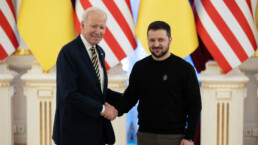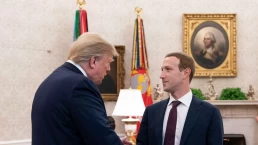Biden may have to shift to a plan B, but can he do it after insisting the freedom of the global world order is at stake?
by Branko Marcetic, Responsible Statecraft
Before the summer, we had the broad outline of what the endgame of the war in Ukraine would look like: Kyiv would train and build up its forces, launch a summer offensive, reclaim as much territory as it could, and finally enter peace talks with the strongest negotiating hand possible and bring the war to a close.
Now, two months into that offensive and with summer’s end nearing, that scenario looks increasingly unlikely. The Ukrainian offensive has by all accounts stalled, as often exhausted, inexperienced, and hastily trained troops are running headfirst into dug-in and heavily mined Russian defenses, at horrific human cost.

This is all being reported, too, in major American media, including CNN, the Washington Post and the New York Times. These and other outlets, which have been explicitly supportive of Ukraine’s war effort, have begun painting quite a bleak picture of the situation on the ground.
Ukrainian forces are expending materiel at an unsustainable rate, using up 90,000 shells a month when the Pentagon is only producing a third of that, while 20 percent of the NATO weaponry it deployed was damaged or destroyed in the first two weeks. In light of the limited gains made by the offensive, President Joe Biden is now asking Congress for $20.6 billion more in aid for Ukraine, stressing that “the United States is committed to maintaining strong global opposition to Russia’s illegal war.”
Recent Posts
“Arrest Now, Ask Questions Later”: Why Did L.A. ICE Agents Arrest and Jail U.S. Citizen Andrea Velez?
July 3, 2025
Take Action Now “They didn’t have vests that said ICE or anything. Their cars didn’t have license plates. … Just because of the color of our…
Trump’s Big, Beautiful Bill Is Naked Class War
July 3, 2025
Take Action Now Trump’s “Big, Beautiful Bill” trades tax cuts on millionaires for the dissolution of society.By Hamilton Nolan, In These Times…
Mayor Mamdani’s First Day, A Zero Hour Conversation With Richard Wolff
July 2, 2025
Take Action Now If elected, what would Mayor Mamdani do on his first day in City Hall? How would a democratic socialist govern as a big-city mayor?……
The U.S. Is Funding A Bloodbath At Gaza Aid Centers
July 2, 2025
Take Action Now The admin just gave $30M to GHF, the organization at the center of charges that Israel is weaponizing assistance and shooting at…




